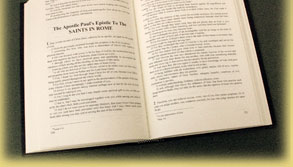George Estes went to great lengths to be both competent and qualified to render the original language into English:
As he wrote:
“It is necessary to make some personal remarks at the beginning for the sake of the translation not to boast about scholarship of learning. To be proficient in Koine Greek, one must have years of study and training, In addition to learning the language, one must know who the best scholars are, both past and present, their books and articles, and how to use these. A lawyer does not know all the law by memory, but he must know how to use his library; he must know what books to read and refer to in order to study the subject at hand. A Greek scholar must do the same.”
“I became interested in Koine Greek while studying under brother Charles H. Roberson in 1944. In 1946 I received a Bachelor of Arts degree from Abilene Christian College with a major in Koine Greek. Brother Roberson was a great study and teacher of that language, and well deserved the title, The Greek Scholar of the Southwest.”
“In the pursuit of further knowledge of this language, I went to and studied under some of the best scholars in this country. Brother Roberson told me that Dr. Cadbury was one of the best, so in the fall of 1946 I was at Harvard Divinity School , and in 1949 I received a degree from that institution. In 1951 I enrolled in Concordia in St. Louis , Missouri , receiving the Master's Degree in 1956, and did additional class work. Professor Franzmann, Dr. Scharleman and Dr. William F. Arndt are some of the teachers I studied under at this school.”
“A translator must also know the field of study known as Textual Criticism. This is a study of the Greek manuscripts, and how men determine what is the correct Greek text. Dr. Arndt was my teacher in this study. One must also know about life in the first century and how people lived. Dr. Arthur W. Klick at Concordia was a very able and competent teacher about life in Bible times. He had done extensive research in the homes and furnishings, the dress, trades and professions, agriculture, cooking and what was involved in life in the first century. This study enables one to give the correct historical setting to a translation.”


